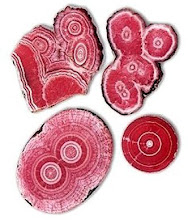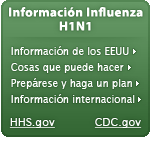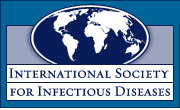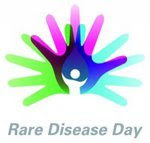Volume 22, Number 1—January 2016
CME ACTIVITY - Research
Falling Plasmodium knowlesi Malaria Death Rate among Adults despite Rising Incidence, Sabah, Malaysia, 2010–2014
On This Page
Giri S. Rajahram1, Bridget E. Barber1 , Timothy William, Matthew J. Grigg, Jayaram Menon, Tsin W. Yeo, and Nicholas M. Anstey
, Timothy William, Matthew J. Grigg, Jayaram Menon, Tsin W. Yeo, and Nicholas M. Anstey
Abstract
Deaths from Plasmodium knowlesi malaria have been linked to delayed parenteral treatment. In Malaysia, early intravenous artesunate is now recommended for all severe malaria cases. We describe P. knowlesifatalities in Sabah, Malaysia, during 2012–2014 and report species-specific fatality rates based on 2010–2014 case notifications. Sixteen malaria-associated deaths (caused by PCR-confirmed P. knowlesi [7], P. falciparum [7], and P. vivax [1] and microscopy-diagnosed “P. malariae” [1]) were reported during 2012–2014. Six patients with severe P. knowlesi malaria received intravenous artesunate at hospital admission. For persons >15 years of age, overall fatality rates during 2010–2014 were 3.4, 4.2, and 1.0 deaths/1,000 P. knowlesi, P. falciparum, and P. vivax notifications, respectively; P. knowlesi–associated fatality rates fell from 9.2 to1.6 deaths/1,000 notifications. No P. knowlesi–associated deaths occurred among children, despite 373 notified cases. Although P. knowlesi malaria incidence is rising, the notification-fatality rate has decreased, likely due to improved use of intravenous artesunate.
Plasmodium knowlesi is the most common cause of malaria in East Malaysia, and the incidence of disease is increasing despite intensive control efforts that have substantially reduced the incidence of P. falciparum and P. vivax malaria in Malaysia (1–3). Although the greatest number of P. knowlesi cases has been reported in East Malaysia, the infection is also the predominant cause of malaria in Peninsular Malaysia (4) and is increasingly reported in other Southeast Asia countries and in travelers returning from these countries (5).
P. knowlesi infection can be associated with high parasitemia and is at least as likely as P. falciparum to cause severe malaria in adults (6). Age is strongly associated with parasitemia and, thus, a key risk factor for severe and fatal disease (6,7), neither of which has been reported in children with PCR-confirmed P. knowlesi malaria (5,8,9). In a tertiary referral hospital in Sabah, northeastern Malaysia, the rate of P. knowlesi malaria–associated deaths was low among persons >12 years of age who were promptly treated (including before hospital referral) with artesunate (6); however, P. knowlesi continues to cause fatal malaria among adults in Sabah (10,11). During 2010–2011, P. knowlesi was responsible for 6 of 14 fatal malaria cases in Sabah. Microscopy-based misdiagnosis of P. knowlesimalaria as the nearly identical, but more benign, P. malariae malaria was common, and fatal outcome was associated with delayed or lack of parenteral therapy: 2 of 6 patients with fatal P. knowlesi malaria received parenteral therapy (1 each with quinine and artesunate); the other 4 received chloroquine or sulfadoxine/pyrimethamine (10).
In the time since that study was conducted, recognition of P. knowlesi and its ability to cause severe disease has increased. The 2013 Management Guidelines of Malaria in Malaysia recommend that results for blood films with parasites resembling P. malariae be reported as P. knowlesi/P. malariae (12). The guidelines emphasize that PCR-confirmed P. malariae is rare in Sabah and that patients with a microscopy-based diagnosis of P. malariae infection should be assumed to have P. knowlesi malaria. Moreover, like recent World Health Organization (WHO) global guidelines (13–15), Malaysian guidelines now recommend intravenous artesunate for all patients with severe malaria caused by any Plasmodium spp. (12), and in western Sabah, the drug is being used earlier and more frequently for all malarial infections (6). In addition, oral artemisinin combination treatment is now recommended for uncomplicatedP. knowlesi malaria (12).
We assessed clinical features and management of fatal P. knowlesi malaria cases in Sabah during 2012–2014. We also determined age-stratified death rates among patients with Plasmodium spp. malaria and assessed trends in fatality rates for P. knowlesi malaria during 2010–2014.
In Sabah, which has an area of 73,600 km2 and population of 3.7 million (16), reporting of all malaria cases and associated deaths to the Sabah Department of Health (DoH) is mandatory; species are reported according to microscopy results. We obtained details of reported malaria-associated deaths during 2012–2014 from the Sabah DoH and reviewed district hospital case notes for clinical details. The study was approved by the ethics committees of the Malaysian Ministry of Health and Menzies School of Health Research.
We reviewed the Sabah DoH malaria notification database for the total number of microscopy-based P. knowlesi/P. malariae, P. falciparum, and P. vivaxmalaria case notifications during 2010–2014. These data were used to determine case-fatality rates (CFRs) among notified cases for each species (hereafter referred to as notified CFRs, defined as number of PCR-confirmed P. knowlesi, P. falciparum, and P. vivax malaria–associated deaths per 1,000 microscopy-based P. malariae/P. knowlesi, P. falciparum, and P. vivax malaria notifications). PCR-confirmed P. malariae infection is rare in Sabah, accounting for <1% of clinical samples diagnosed by microscopy as P. malariae or P. knowlesi (1); thus, most notifications of P. malariae/P. knowlesi can be assumed to be P. knowlesi. During 2010–2014 in Sabah, only 1 fatal malaria case, a microscopy-diagnosed P. malariae infection, lacked PCR confirmation; an adjusted CFR was calculated following inclusion of this case.
Sixteen malaria-associated deaths were reported in Sabah during 2012–2014, of which 15 were confirmed by PCR to be caused by P. knowlesi (7 cases; cases 1–7, Technical Appendix[PDF - 361 KB - 7 pages]); P. falciparum (7 cases); or P. vivax (1 case). Details of 1 P. knowlesi case (case 2) were previously reported (11). The remaining fatal case was microscopy diagnosed (without PCR confirmation) as P. malariae infection (Technical Appendix[PDF - 361 KB - 7 pages]).
Fatal PCR-Confirmed P. knowlesi Malaria
All 7 fatal P. knowlesi malaria cases occurred in adults (median age 61 [range 31–73] years); 4 were women. Six of these cases had been misdiagnosed by microscopy as P. malariae (4), P. falciparum (1), or P. vivax (1) infections. Severe malaria was recognized in 5 patients when they sought medical care; all received intravenous artesunate within 90 (median 30) minutes of diagnosis. Severity criteria at admission for these patients were jaundice (4 patients), acute kidney injury (3), metabolic acidosis (4), hyperparasitemia (2), respiratory distress (2), and coma (1) (Technical Appendix[PDF - 361 KB - 7 pages]Tables 1, 2). Shock and respiratory distress developed in all patients before death. All patients were intubated and ventilated; 2 received hemodialysis. Death occurred within 5–117 (median 41) hours of admission.
Two patients with fatal P. knowlesi malaria were not recognized to have severe malaria at admission; they received oral antimalarial treatment. One of these patients (case-patient 7, Technical Appendix[PDF - 361 KB - 7 pages] Table 1) had a blood film result reported as 22,666 P. malariae parasites/μL and was given oral artesunate/mefloquine for apparent uncomplicated malaria. Her creatinine level was 124 (reference 63–133) μmol/L; bilirubin, lactate, and bicarbonate results were not available. Within 12 hours, she became hypotensive and tachypneic; chest radiographs showed diffuse opacities in both lung fields. She was intubated and started on intravenous artesunate but died within 23 hours of admission. Subsequent reexamination of her initial blood slide showed 263,772 parasites/μL. The other patient (case 5, Technical Appendix[PDF - 361 KB - 7 pages] Table 1) was also thought to have uncomplicated malaria; her blood film result was reported as 9,866 P. vivax parasites/μL, her bilirubin level was 46 (reference <17) μmol/L, and her creatinine level was 143 μmol/L. She was treated with 1 dose of intravenous artesunate followed by chloroquine and primaquine. Blood film results the next day indicated P. knowlesi infection with 20,000 parasites/μL. Acute respiratory distress syndrome (ARDS) and metabolic acidosis developed, and the patient died on day 3, despite recommencement of intravenous artesunate. Postmortem reexamination of her initial blood slide showed 55,111 P. knowlesi parasites/μL.
One patient, a 56-year-old man, was comatose, a condition not previously reported in P. knowlesi malaria. He was unresponsive when brought into a health clinic by relatives, who reported a 1-day history of weakness and drowsiness and a 3-day history of fever, chills, arthralgia, and myalgia. At hospital referral, his blood pressure was 85/60 mm Hg, pulse rate 150 beats/min, and oxygen saturation 81% on room air. He had a Glasgow Coma Scale score of 6/15. Pupils were reactive but asymmetric (right 2 mm, left 4 mm). Meningism was not present, and neurologic examination showed normal tone, symmetrically reduced reflexes, and downgoing plantar reflexes. Blood investigations showed 6,471 P. knowlesi parasites/μL and metabolic acidosis. Computed tomography brain scan and lumbar puncture were not performed. The patient was intubated and begun on intravenous artesunate and ceftriaxone but died 41 hours after admission. Blood cultures for bacterial infections were negative.
Fatal PCR-Confirmed P. vivax Malaria
One person, a 53-year-old man, died from P. vivax malaria. At admission, he had a 7-day history of fever, rigors, myalgia, nonproductive cough, and abdominal pain. Physical examination results were unremarkable. Thrombocytopenia was present, and his bilirubin level was 21.5 μmol/L; creatinine and hemoglobin levels were normal. A blood film result was reported as 2,090 P. vivax parasites/μL; oral chloroquine and primaquine treatment were begun. The next day, the parasite count was 890 parasites/μL of blood, but the patient became hypotensive, and ARDS developed; a postintubation chest radiograph showed bilateral opacities. Intravenous artesunate and antibiotic drugs were initiated, and hemodialysis was performed for acute kidney injury (creatinine level 316 μmol/L), but the patient died 4 days after admission. Blood cultures for bacterial infections were negative.
Fatal PCR-Confirmed P. falciparum Malaria
Of the 7 P. falciparum malaria–associated deaths, 2 (29%) occurred in children (a boy and a girl 2–3 years of age, both Filipino) and 5 (71%) occurred in adults (3 men and 2 women 31–80 years of age; 2 Filipino, 2 Malaysian, and 1 Indonesian). At the initial examination, all patients met WHO criteria for severe malaria: jaundice (5 patients), cerebral malaria (4 patients), renal failure (3 patients), respiratory distress (3 patients), and anemia (2 patients). Within 2 hours of malaria diagnosis, 1 patient was given oral artesunate/mefloquine and all others were given intravenous artesunate. All patients were intubated and ventilated, 6 received inotropes, and dialysis was performed on 3. All patients died within 2–9 days of admission. Blood cultures for 1 child and 1 adult were positive for Klebsiella pneumoniae and coagulase-negative staphylococci, respectively; the latter was thought to represent contamination.
Review of 2010–2014 Malaria Notification Data
The overall notified CFR for P. knowlesi malaria was 3.08 deaths/1,000 cases, compared with 4.83 and 0.87 deaths/1,000 cases of P. falciparum and P. vivax malaria, respectively (Table). Among adults (persons >15 years of age), notified CFRs were 3.37, 4.17, and 1.02 deaths/1,000 cases for P. knowlesi, P. falciparum, and P. vivax malaria, respectively. Despite 373 notifications of P. knowlesi malaria and 611 notifications of P. vivax malaria among children (persons <15 years of age) during 2010–2014, no deaths from either species were reported. However, children with P. falciparum malaria had a notified CFR of 6.7 deaths/1,000 cases. Notified CFRs among adults with P. knowlesi malaria declined from 9.2 to 1.6 deaths/1,000 notifications in 2010 and 2014, respectively (χ2 test for trend, p = 0.11).
During 2010–2014, female patients accounted for only 783 (19%) of the 4,217 P. malariae/P. knowlesi notifications, but they accounted for 6 (46%) of the 13 fatal P. knowlesi malaria cases. Thus, the notified CFR for P. knowlesi malaria was 7.66 deaths/1,000 cases for female patients, compared with 2.04 deaths/1,000 cases for male patients (Fisher exact test, p = 0.021). However, this difference was not significant in a multivariate logistic regression model adjusting for age (odds ratio 2.60, p = 0.095). For P. falciparum and P. vivax malaria, no difference was seen in the number of notified CFRs for male and female patients.
Despite ongoing microscopy-based misdiagnoses of P. knowlesi infections, management of severe malaria in Sabah appears to have improved; all patients recognized to have severe P. knowlesi malaria on admission received intravenous artesunate as initial therapy. Although our findings clearly demonstrate the ability of P. knowlesi to cause fatal malaria despite optimal therapy, P. knowlesi notified CFRs in Sabah have fallen over the past 5 years in association with the increased early use of artesunate documented in this and other reports (6). Death from P. knowlesi malaria remains unreported in children, and all but 1 of the P. knowlesi–associated deaths in this series occurred in adults >50 years of age.
The absence of P. knowlesi–associated deaths among children, despite 373 P. malariae/P. knowlesi notified cases in this age group during 2010–2014, contrasts with the well-recognized risk for childhood deaths from P. falciparum malaria (17) and extends the lack of previous reports of either severe or fatal outcomes in children with P. knowlesi malaria (5,8,9). Furthermore, the large number of notified cases in children in this series suggests that the lack of P. knowlesi–associated deaths among children may not be due solely to the relative underrepresentation of children in previous series of P. knowlesimalaria (6,7,18,19). A lower risk for severe and fatal P. knowlesi malaria in children may be due to the previously documented strong association between age and parasitemia (6); the level of parasitemia in children is generally insufficient to cause severe and fatal disease (20). In addition, younger age may be associated with physiologic protection from severe and fatal P. knowlesi malaria, as suggested by previous findings of a lower risk of severe malaria after primary exposure to P. falciparum in nonimmune children compared with nonimmune adults (21).
Clinical and demographic characteristics for adult P. knowlesi malaria patients in this study were consistent with those in previous reports (1,6,7,18). Patients had a median age of 61 years. Because of the strong correlation between age and parasitemia, older patients are known to be at increased risk for severe P. knowlesi malaria (6). Of the 7 patients who died, 4 were female; thus the notified CFR was significantly higher among female than male patients. Although this discrepancy appears to be primarily due to the older age of female patients with P. knowlesi malaria (1), a trend toward increased notified CFRs for female P. knowlesi patients remained even after adjusting for age. This finding is consistent with the increased risk for severe P. knowlesi malaria found for female patients in some (7,18), but not all (6), previous studies. Larger studies are needed to clarify the association between sex and risk for severe P. knowlesi malaria.
The complications experienced by the P. knowlesi malaria patients in this study were generally consistent with those in other reports; hyperparasitemia, respiratory distress, shock, jaundice, and acute kidney injury were common in this and previous reports (6,7,18,22–24). Metabolic acidosis occurred in 5 patients in this series. This complication of severe P. knowlesi malaria was uncommon in a previous tertiary referral hospital study that involved early, including prereferral, use of artesunate and in which no deaths occurred (6). However, metabolic acidosis has been reported in most fatal P. knowlesimalaria cases (7,10,11,18,25), and, as with P. falciparum malaria, is likely a late complication signifying poor outcome. Acute lung injury was present at admission in 2 patients and developed after treatment initiation in all remaining P. knowlesi patients; this finding is consistent with a posttreatment inflammatory response, as previously postulated (6).
Coma has not previously been reported in P. knowlesi malaria. Although decreased conscious state occurred in 1 patient in this study, blood cultures, lumber puncture, and computed tomography brain scan were not performed, and pupillary asymmetry, reported in this patient, is unusual in coma due toP. falciparum malaria. Therefore, while decreased consciousness directly associated with P. knowlesi remains possible, alternative causes are plausible.
Microscopy-based misdiagnosis of P. knowlesi infection occurred in 6 of 7 cases. Four of the 6 case-patients had misdiagnoses of P. malariae infection; all had high parasitemia (2 had >100,000 parasites/µL of blood), which is inconsistent with a diagnosis of P. malariae infection but highly suggestive of P. knowlesi infection. Malaysia’s malaria guidelines recommend that blood films with parasites resembling P. malariae be reported as P. knowlesi/P. malariae(12); however, high parasitemia, particularly in the context of a very low statewide prevalence of P. malariae (1), makes P. malariae infection unlikely. The frequent microscopy-based misdiagnosis of P. knowlesi malaria in this and other reports (26) in Sabah highlights the need for alternative rapid diagnostic methods.
Despite the frequent misdiagnoses in this series, all patients with fatal P. knowlesi infection who were recognized as having severe malaria at admission were appropriately treated with early intravenous artesunate. In contrast, in our 2010–2011 review of malaria deaths (10), only 2 of 5 patients with severe P. knowlesi malaria received parenteral treatment; the other 3, who had misdiagnoses of P. malariae or P. vivax malaria, received oral chloroquine or sulfadoxine/pyramethamine. In the current study, 2 patients were thought to have uncomplicated malaria and received oral therapy (case-patient 5 was given chloroquine after 1 dose of intravenous artesunate; case-patient 7 was given artesunate/mefloquine). Postmortem reexamination of these patients’ initial blood films showed a parasite count substantially higher than initially reported (55,111 parasites/μL vs. 9,866 parasites/μL for case-patient 5; 263,772 parasites/μL vs. 22,666 parasites/μL for case-patient 7). Parasitemia has been shown to be a major risk factor for severe P. knowlesi malaria: in a recent prospective study, severity criteria were present in >50% of patients with >20,000 parasites/μL of blood and >80% of patients with >100,000 parasites/μL of blood (6). WHO guidelines now recommend that intravenous artesunate be used for all patients with P. knowlesi malaria and >100,000 parasites/μL of blood or, if testing for laboratory criteria for severe malaria is not available, >20,000 parasites/μL blood (14,15). The failure of oral therapy in case-patient 7 (initial blood slide reported as 22,666 parasites/μL; bilirubin not available) highlights the value of this recommendation. Moreover, these 2 cases demonstrate that parasitemia must be accurately quantified in patients with P. knowlesi malaria.
The use of chloroquine in case-patient 5 may have contributed to the poor outcome. Compared with artesunate/mefloquine, chloroquine has been associated with reduced parasite clearance time in P. knowlesi malaria (27,28) and is no longer recommended as first-line treatment for P. knowlesimalaria in Malaysia (12). In Sabah, parasite clearance time for P. vivax malaria treated with chloroquine is reduced compared with that for cases treated with artesunate/mefloquine, and treatment failures are common (29). Moreover, P. knowlesi and P. vivax are frequently confused in microscopy examination (26); hence, a unified treatment approach should be considered in Sabah, using artemisinin for all malaria cases.
Although this case series highlights the ability of P. knowlesi malaria to cause fatal disease in adults even after prompt administration of intravenous artesunate, it must be noted that the number of deaths has not increased over recent years, despite a rise in P. knowlesi malaria notifications from 384 in 2010 to 1,325 in 2014. Thus, the adult notified CFR has declined from 9.2 deaths/1,000 notifications in 2010 to 1.6 deaths/1,000 notifications in 2014. This improvement likely resulted from increased recognition of the ability of P. knowlesi to cause severe disease and to increased use of intravenous artesunate. Although intravenous artesunate has been recommended in Sabah since December 2008, intravenous quinine was still in use until at least 2010 (10). In a retrospective study of severe P. knowlesi malaria at a tertiary referral hospital in Sabah during 2007–2009, a total of 5 (31%) of 16 patients treated with intravenous quinine died. In contrast, at the same hospital during 2010–2011, none of the severe P. knowlesi malaria patients treated with early intravenous artesunate died (6). In addition, in Sabah, the increasing use of artemisinin combination treatment instead of chloroquine for uncomplicated P. knowlesi malaria (6) may also have contributed to the decline in notified CFRs, particularly for cases in which severe disease is unrecognized.
We also reported a case of fatal P. vivax malaria with ARDS, an increasingly well-recognized complication of P. vivax malaria that has resulted in fatalities (30–34). The pathophysiologic mechanism likely involves soluble mediators and endothelial damage, exacerbated by shock and leading to diffuse damage to alveolar membranes (30). As with the case in our study, most ARDS cases occur after treatment initiation (32,35), possibly resulting from an exacerbated inflammatory response to parasite killing. Most of the initial cases of P. vivax–associated ARDS were in returned travelers with single organ dysfunction and nonfatal outcome; however, more recent series from countries where P. vivax is endemic have reported ARDS cases with multiorgan dysfunction and considerable mortality (35,36).
This study had several limitations. First, the retrospective design of the case series resulted in unavoidably incomplete laboratory and clinical data. In particular, alternative diagnoses cannot be excluded in the case of possible P. knowlesi–associated coma. Second, our calculation of the microscopy-based notified CFR represents only an estimate of the true P. knowlesi–associated CFR. The accuracy of this estimate will depend on the accuracy of microscopy-based identification of all Plasmodium species, the notification rate of malaria cases, and the proportion of persons with malaria who seek care at a health clinic. We do not have data on the proportion of malaria cases in Sabah that are notified; it is probable, however, that some are not notified, so the notified CFR likely overestimates the true CFR. In addition, we cannot exclude the possibility that the reduction in the P. knowlesi–associated notified CFRs during 2010–2014 is due to an increase in the proportion of malaria cases that are notified. However, notification of malaria cases in Sabah has been mandatory since 1992, and there is no reason to suspect that the notification rate would have changed substantially since 2010. It is similarly unlikely that the proportion of P. knowlesi malaria cases diagnosed as P. falciparum malaria, and vice versa, changed sufficiently over the 5-year period to account for the observed decline in notified CFRs (1). Nonetheless, larger prospective studies involving molecular diagnostic methods are needed to obtain a more accurate assessment of the true P. knowlesi malaria CFR, including changes over time. Although we report notified CFRs for P. knowlesi, P. falciparum, andP. vivax malaria, these data may not reflect the relative virulence of each species. In this series, non-Malaysian citizens accounted for a higher proportion (5/7) of patients with fatal P. falciparum malaria than fatal P. knowlesi malaria, and it is possible that a delay in seeking care at a healthcare facility may be a confounding factor in comparing CFRs for malaria caused by these Plasmodium spp.
In conclusion, our findings show that despite increasing notifications of P. knowlesi malaria cases in Sabah, the number of fatal cases has not increased. The reduction in notified CFRs may be associated with the increased recognition of the ability of P. knowlesi to cause severe and fatal malaria and improved use of intravenous artesunate for severe malaria caused by any Plasmodium spp, as per recent policy changes (6,12). Nonetheless, this study demonstrates the ability of P. knowlesi to cause fatal malarial disease in adults, despite optimal therapy, and that P. knowlesi remains the most common cause of fatal malaria in adults in Sabah. In contrast, the study shows a notable absence of deaths among children with P. knowlesi malaria.
Dr. Rajahram is an infectious diseases physician at Queen Elizabeth Hospital, Sabah, Malaysia, and he is actively involved with ongoing malaria research projects being conducted in Sabah with the Infectious Diseases Society Sabah-Menzies School of Health Research Clinical Research Unit. His primary research interests are the epidemiology and clinical features of Plasmodium knowlesi malaria.
Acknowledgments
We thank the medical records departments at all involved hospitals for their assistance with retrieving medical records; the Vector Borne Diseases Control Unit, Sabah Department of Health, for providing the malaria notification data; and the Director General of Health, Ministry of Health Malaysia, for permission to publish this study.
This work was supported by the Malaysian Ministry of Health (grant BP00500420) and the Australian National Health and Medical Research Council (grants 1037304 and 1045156 and fellowships to N.M.A., B.E.B., and T.W.Y., and scholarships to M.J.G).
References
- William T, Jelip J, Menon J, Anderios F, Mohammad R, Awang Mohammad TA, Changing epidemiology of malaria in Sabah, Malaysia: increasing incidence of Plasmodium knowlesi. Malar J. 2014;13:390. DOIPubMed
- William T, Rahman HA, Jelip J, Ibrahim MY, Menon J, Grigg MJ, Increasing incidence of Plasmodium knowlesi malaria following control of P. falciparum and P. vivax malaria in Sabah, Malaysia. PLoS Negl Trop Dis. 2013;7:e2026. DOIPubMed
- Sarawak State Health Department. Sarawak EPID News [cited 2015 Jun 6]. http://jknsarawak.moh.gov.my/en/modules/wfdownloads/viewcat.php?cid=31
- Yusof R, Lau YL, Mahmud R, Fong MY, Jelip J, Ngian H, High proportion of knowlesi malaria in recent malaria cases in Malaysia. Malar J.2014;13:168. DOIPubMed
- Singh B, Daneshvar C. Human infections and detection of Plasmodium knowlesi. Clin Microbiol Rev. 2013;26:165–84. DOIPubMed
- Barber BE, William T, Grigg MJ, Menon J, Auburn S, Marfurt J, A prospective comparative study of knowlesi, falciparum and vivax malaria in Sabah, Malaysia: high proportion with severe disease from Plasmodium knowlesi and P. vivax but no mortality with early referral and artesunate therapy.Clin Infect Dis. 2013;56:383–97. DOIPubMed
- William T, Menon J, Rajahram G, Chan L, Ma G, Donaldson S, Severe Plasmodium knowlesi malaria in a tertiary hospital, Sabah, Malaysia. Emerg Infect Dis. 2011;17:1248–55. DOIPubMed
- Barber BE, William T, Jikal M, Jilip J, Dhararaj P, Menon J, Plasmodium knowlesi malaria in children. Emerg Infect Dis. 2011;17:814–20.DOIPubMed
- Barber BE, William T, Dhararaj P, Anderios F, Grigg MJ, Yeo TW, Epidemiology of Plasmodium knowlesi malaria in northeast Sabah, Malaysia: family clusters and wide age distribution. Malar J. 2012;11:401. DOIPubMed
- Rajahram GS, Barber BE, William T, Menon J, Anstey NM, Yeo TW. Deaths due to Plasmodium knowlesi malaria in Sabah, Malaysia: association with reporting as P. malariae and delayed parenteral artesunate. Malar J. 2012;11:284. DOIPubMed
- Rajahram GS, Barber BE, Yeo TW, Tan WM, William T. Case report: fatal Plasmodium knowlesi malaria following an atypical clinical presentation and delayed diagnosis. Med J Malaysia. 2013;68:71–2 .PubMed
- Ministry of Health Malaysia. Management guidelines of malaria in Malaysia. 2014 [cited 2015 Aug 15].http://www.moh.gov.my/english.php/pages/view/118
- World Health Organization. Guidelines for the treatment of malaria. 3rd edition. Geneva: The Organization; 2015.
- World Health Organization. Management of severe malaria: a practical handbook. 3rd edition. Geneva: The Organization; 2013.
- World Health Organization. Severe malaria. Trop Med Int Health. 2014;19(Suppl 1):7–131. DOIPubMed
- Department of Statistics Malaysia. Statistics. Sabah [cited 2015 Jun 6]. https://www.statistics.gov.my/index.php?r=column/cone&menu_id=dTZ0K2o4YXgrSDRtaEJyVmZ1R2h5dz09
- Dondorp AM, Fanello CI, Hendriksen IC, Gomes E, Seni A, Chhaganlal KD, Artesunate versus quinine in the treatment of severe falciparum malaria in African children (AQUAMAT): an open-label, randomised trial. Lancet. 2010;376:1647–57. DOIPubMed
- Daneshvar C, Davis TM, Cox-Singh J, Rafa’ee M, Zakaria S, Divis P, Clinical and laboratory features of human Plasmodium knowlesi infection. Clin Infect Dis. 2009;49:852–60. DOIPubMed
- Willmann M, Ahmed A, Siner A, Wong I, Woon L, Singh B, Laboratory markers of disease severity in Plasmodium knowlesi infection: a case control study. Malar J. 2012;11:363. DOIPubMed
- Grigg MJ, William T, Menon J, Barber B, Wilkes CS, Price R, Disease burden from P. vivax and P. knowlesi malaria in children in Sabah, Malaysia. In: Abstracts of the 5th International Conference of Research on Plasmodium vivax Malaria; Jimbaran, Bali, Indonesia; 2015 May 19–22. Jakarta: Eijkman–Oxford Clinical Research Unit; 2015.
- Baird JK, Masbar S, Basri H, Tirtokusumo S, Subianto B, Hoffman SL. Age-dependent susceptibility to severe disease with primary exposure toPlasmodium falciparum. J Infect Dis. 1998;178:592–5. DOIPubMed
- Cox-Singh J, Davis TM, Lee KS, Shamsul SS, Matusop A, Ratnam S, Plasmodium knowlesi malaria in humans is widely distributed and potentially life threatening. Clin Infect Dis. 2008;46:165–71. DOIPubMed
- Ahmed MA, Cox‐Singh J. Plasmodium knowlesi—an emerging pathogen. ISBT Science Series. 2015;10(Suppl 1):134–40.
- Lee CE, Adeeba K, Freigang G. Human Plasmodium knowlesi infections in Klang Valley, Peninsular Malaysia: a case series. Med J Malaysia.2010;65:63–5 .PubMed
- Cox-Singh J, Hiu J, Lucas SB, Divis PC, Zulkarnaen M, Chandran P, Severe malaria—a case of fatal Plasmodium knowlesi infection with post-mortem findings. Malar J. 2010;9:10. DOIPubMed
- Barber BE, William T, Grigg MJ, Yeo TW, Anstey NM. Limitations of microscopy to differentiate Plasmodium species in a region co-endemic forPlasmodium falciparum, Plasmodium vivax and Plasmodium knowlesi. Malar J. 2013;12:8. DOIPubMed
- Grigg MJ, William T, Dhanaraj P, Menon J, Barber BE, von Seidlein L, A study protocol for a randomised open-label clinical trial of artesunate–mefloquine versus chloroquine in patients with non-severe Plasmodium knowlesi malaria in Sabah, Malaysia (ACT KNOW trial). BMJ Open.2014;4:e006005.
- Grigg MJ, William T, Dhanaraj P, Menon J, Barber B, von Seidlein L, A randomized open-label clinical trial of artesunate–mefloquine versus chloroquine in patients with non-severe Plasmodium knowlesi malaria in Sabah, Malaysia (ACT KNOW trial). Lancet Infect Dis. 2015. In press. DOI
- Grigg MJ, William T, Menon J, Dhanaraj P, Barber B, Wilkes CS, A randomized open-label clinical trial of artesunate–mefloquine versus chloroquine in patients with non-severe Plasmodium vivax malaria in Sabah, Malaysia. In: Abstracts of the 5th International Conference of Research onPlasmodium vivax Malaria; Jimbaran, Bali, Indonesia; 2015 May 19–22. Jakarta: Eijkman–Oxford Clinical Research Unit; 2015.
- Valecha N, Pinto RGW, Turner GDH, Kumar A, Rodrigues S, Dubhashi NG, Histopathology of fatal respiratory distress caused by Plasmodium vivaxmalaria. Am J Trop Med Hyg. 2009;81:758–62. DOIPubMed
- Lacerda MVG, Fragoso SCP, Alecrim MGC, Alexandre MAA, Magalhães BML, Siqueira AM, Postmortem characterization of patients with clinical diagnosis of Plasmodium vivax malaria: to what extent does this parasite kill? Clin Infect Dis. 2012;55:e67–74. DOIPubMed
- Anstey NM, Douglas NM, Poespoprodjo JR, Price R. Plasmodium vivax: clinical spectrum, risk factors and pathogenesis. Adv Parasitol.2012;80:151–201. DOIPubMed
- Douglas NM, Pontororing G, Lampah D, Yeo T, Kenangalem E, Poespoprodjo J, Mortality attributable to Plasmodium vivax malaria: a clinical audit from Papua, Indonesia. BMC Med. 2014;12:217. DOIPubMed
- McGready R, Wongsaen K, Chu C, Tun N, Chotivanich K, White N, Uncomplicated Plasmodium vivax malaria in pregnancy associated with mortality from acute respiratory distress syndrome. Malar J. 2014;13:191. DOIPubMed
- Anstey NM, Russell B, Yeo TW, Price RN. The pathophysiology of vivax malaria. Trends Parasitol. 2009;25:220–7. DOIPubMed
- Siqueira AM, Lacerda MV, Magalhães BM, Mourão MP, Melo GC, Alexandre MA, Characterization of Plasmodium vivax–associated admissions to reference hospitals in Brazil and India. BMC Med. 2015;13:57. DOIPubMed
Table
Technical Appendix
Suggested citation for this article: Rajahram GS, Barber BE, William T, Grigg MJ, Menon J, Yeo TW, et al. Falling Plasmodium knowlesi malaria death rate among adults despite rising incidence, Sabah, Malaysia, 2010–2014. Emerg Infect Dis. 2016 Jan [date cited]. http://dx.doi.org/10.3201/eid2201.151305
1These co-first authors contributed equally to this article.























.png)












No hay comentarios:
Publicar un comentario